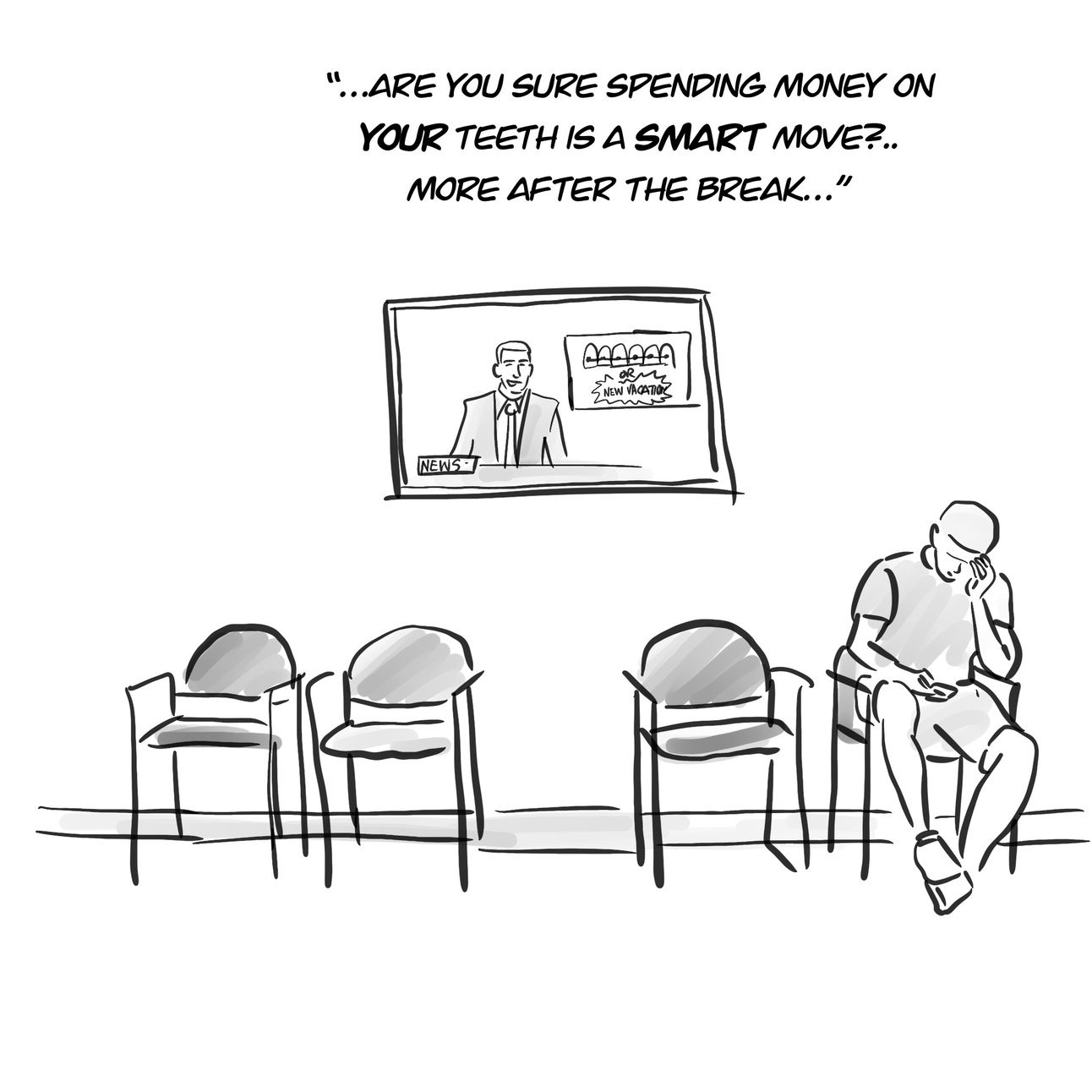- The Moment
- Posts
- Subliminal Signs Someone Will Start
Subliminal Signs Someone Will Start
Read time: 7 minutes
At a glance:
Quote:
Picture
What I’ve Learned
Quote
"…It is in the moments of decision that your destiny is shaped."

“Get his case, records, and sh%* off my desk!”
His face turned a deep shade of red.
A new one-star review pissed him off.
“He’s angry,” whispered his assistant Deb to the rest of the team “He gets like this when his treatments are criticized. Especially when he’s hungry. Let him vent. Wait until his sugar rises.”
His round belly made it clear - he liked to eat.
Especially when he was stressed.
Deb took a deep breath. “Here, have this,” she said, offering him fruit.
The doctor snatched it from her hand, taking a large bite.
….No one spoke as they watched him chew.
________________
Now stop.
In your mind…. What fruit is the doc chomping on?
…What fruit did you “see” him chomp?
Don’t read on until you’ve answered.
…Cause I bet you visualized an apple.
Three words describing an apple were there: Red. Round. Fruit.
…But couldn’t a banana and pear also be true?
Yet your brain filled in the gap.
You visualized an apple because enough signals allowed you to make a quick judgment. You were so focused on my made-up story about the upset doctor and what the patient review said that you subconsciously decided he was eating an apple. Had the orthodontist been described as slim, wearing a yellow shirt, or had he ‘slipped into a state of hunger’, what you might have visualized might have been different.
This is the way our brain works.
We are – and can be – programmed to make gut decisions based on inputs we aren’t even consciously aware of.
Our brain fills our knowledge gaps and decides without us realizing it.
This week’s lesson is based on orthodontic lectures from the Peniche and Associates Group, Dan Gilbert’s, “Stumbling on Happiness,” and Leonard Mlodinow’s “Subliminal: How Your Unconscious Mind Rules Your Behavior.”
The idea: Thousands of adult patients each year enter orthodontic practices with the intentions of starting treatment. They’re not dental patients – they know what they want.
….yet many decline.
They justify their reasons with ‘expenses, the timeline, or something else that makes rational sense.
But I learned that maybe there are judgments made in the moments we aren’t aware of. Inputs that give a yes or no before the practice asks. Before reasoning gives a reason to move forward.
5 Ideas to consider:
1. Remove competitors:
You can choose between straightening your teeth and buying a new home theatre system. Once a patient enters a practice, there should be no other images or ads to spend elsewhere. Think of removing HGTV or the news playing in the waiting room, and get rid of magazines with flashy material goods. The message, images, and senses should be all pointed to them starting treatment today and the investment treatment provides. Remove all discretionary possibilities upon entering.
2. Incorporate the Confetti:
How does the practice smell? How important did the new patient feel when walking in? Was the practice too busy to welcome the patient’s arrival? Did the front desk use the new patient’s name? Did it establish familiarity? …or was it a sterile waiting room experience?
We take in much more beneath the surface: The first 10 seconds of entering an orthodontic practice is the most important of the new patient exam. Make it seem as if the decision already happened before they walk in. Starting is the expectation, not a decision.
3. Have as many ‘YES’ & ‘Start NOW’ images as possible:
Are there “Yes” signs in the waiting room and the exam room? Are there economic claims and ideas that prime our new prospects towards yes prior? (i.e. “Did you know that straight teeth helps increase earnings up to 5% per year based on a survey by Dr. Hamermesh?”). This is a lifetime economic investment return that worth more than the $5500 they’ll spend. Too often, the only signs in the practice waiting room are about limited cell phone use or a suggestion box. Display a Yes sign - figuratively and literally.
4. What results/outcomes are on display of others completing this journey?
People follow people. We have a herd mentality. Are there pictures of them on display? Are there before-and-after visualizations in the exam? Are there in-practice reviews that signal this is the place to begin a new journey? Here’s a way to think of it: If there was a movie tracking shot of your practice, with only cinema soundtrack music…how would a patient feel and perceive the movie they’re currently watching: a stressful place full of bustle, a scary medical waiting room or a story of hope & transformation?
5. Make the subconscious already accept:
As soon as the new patient is scheduled, there should be lead-in excitement as if the patient already started. Are we congratulating them for starting their journey via a first text? Do we send fun text reminders showcasing our excitement of the practice? How many moments of excitement did the consumer experience before they walked in? Think after the sale before the sale.
_________________________
If the core concept is true: that we are not fully aware of what goes into our decisions, then practices should do everything they can to send signals, inputs, and fill knowledge gaps towards yes:
“When deciding to do something or not, we don’t make an even-handed search for evidence. We hunt for reasons to confirm our gut decision. As soon as we have a hunch, we stop. Those hunches aren’t explicit – they’re filled by brain gaps and feelings lurking underneath the surface.”
Don’t attempt to change the human condition. Give yourself every possible advantage to have the patient say Yes.
Make this yes decision as vivid in their mind as the apple you saw earlier:
“Of course I’m starting...”